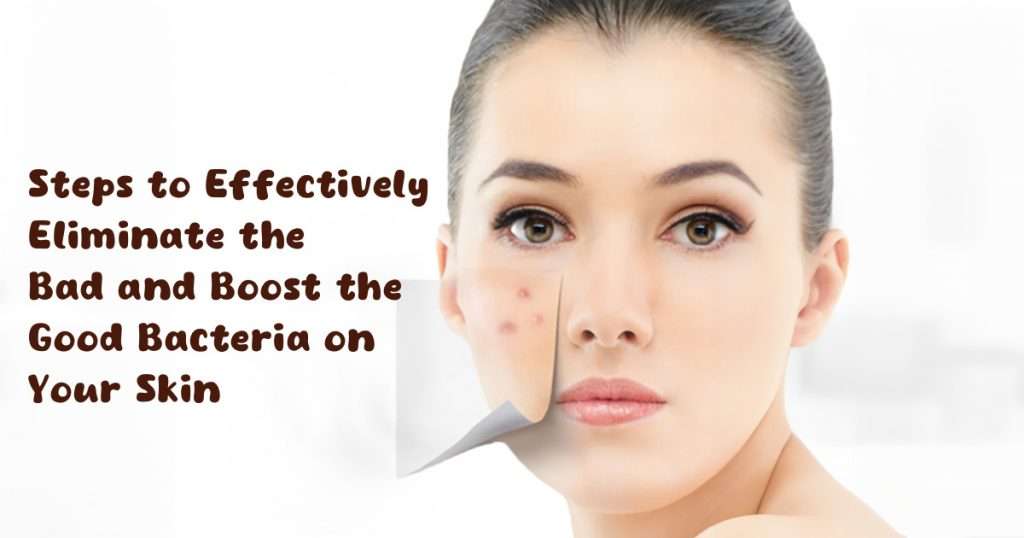Looking after our skin is essential, not just for looking good but for our overall health too. Think of your skin as the body’s shield; it’s the largest organ and it defends us against pollution, germs, and injuries. Plus, it helps keep our body temperature right and lets us feel sensations like touch and temperature changes. Healthy skin is really important because, according to a newsletter from NIH News in Health, if our skin isn’t in good shape, we could face a lot of health issues.
This ranges from simple things like infections and rashes to more serious conditions such as psoriasis and eczema, which can affect how well we live our lives. That’s why washing and taking care of our skin regularly is so important. But there’s something to think about: when we clean our skin, are we also washing away the good bacteria it needs to stay healthy, along with the bad germs?
Understanding Good Bacteria on the Skin
Many people think we need to get rid of all bacteria, but actually, our skin is home to lots of tiny organisms, including bacteria, fungi, and viruses. Together, they’re called the skin microbiome. These tiny organisms are really important for keeping our skin healthy. They protect us from bad germs, help control our immune system, and keep our skin’s protective barrier strong.
For example, good bacteria like Staphylococcus epidermidis can fight off harmful germs by making special proteins. But when we take baths or showers and use antibacterial products, we might accidentally remove these helpful microbes. This problem makes scientists wonder if there’s a way to clean our skin well without losing the good bacteria that live there.
Keeping Good Bacteria While Getting Rid of the Bad Ones
To keep our skin’s microbiome healthy, it’s important to find a balance that gets rid of harmful bacteria while keeping and helping the good ones thrive. Here are some ways to do this:
Gentle Cleansing
When it comes to cleaning your skin, the goal is to remove dirt and oil without causing harm. Using gentle, pH-balanced cleansers ensures that you’re not stripping away the skin’s natural oils or the beneficial bacteria that live there. These good bacteria are crucial for keeping harmful bacteria in check and maintaining healthy skin. Avoid antibacterial soaps and rough scrubs, as these can disrupt your skin’s natural balance, leading to issues like dryness or irritation.
Moisturizing
After cleansing, it’s important to moisturize. Moisturizers with prebiotics and postbiotics do more than just soften and hydrate your skin; they also feed and support the growth of good bacteria. This strengthens your skin’s protective barrier, making it better equipped to defend against irritants and environmental damage.
Probiotic Skincare Products
Probiotic skincare is a game-changer for maintaining skin health. These products contain beneficial bacteria (probiotics) or nutrients that support them (prebiotics), helping to replenish and balance your skin’s microbiome. This can enhance your skin’s natural defenses, keeping it healthy and resilient.
Balanced Diet
What you eat affects your skin from the inside out. Foods rich in fiber, probiotics, and prebiotics support a healthy gut, which, in turn, can lead to a healthier skin microbiome. A balanced diet filled with vegetables, fruits, whole grains, and fermented foods can nourish your body and promote the growth of beneficial bacteria both in your gut and on your skin.
Avoid Over-washing
Washing your skin too often, especially with hot water, can strip away its natural oils and good bacteria, leaving it dry and irritated. It’s important to find a balance that keeps you clean without overdoing it. Lukewarm water and limiting bath time can help preserve your skin’s microbiome.
Stay Hydrated
Drinking enough water is essential for overall health, including the health of your skin. Staying hydrated helps maintain your skin’s moisture level, supporting the function of your skin’s barrier and microbiome. This can lead to clearer, more vibrant skin.
Wear Protective Clothing
When heading outdoors, protecting your skin from the sun and environmental pollutants is crucial. Wearing protective clothing, and hats, and applying sunscreen can shield your skin from harmful UV rays and pollution. This minimizes damage and reduces the need for harsh cleaning later, helping to maintain the balance of your skin’s microbiome.
A Whole-Body Approach to Keeping Your Skin Healthy
In wrapping up, it’s clear that looking after your skin isn’t just about what you put on it. It’s about taking care of yourself from the inside out. By knowing how important it is to keep a balance of good bacteria on our skin and following steps to support this, we can protect our skin more effectively. This means choosing gentle cleansers, using moisturizers that are good for our skin’s health, picking skincare products with probiotics, eating well, not washing too often, drinking plenty of water, and covering up in the sun.
It’s important to remember that our skin’s condition is closely linked to our overall health. What we eat, how much water we drink, and how we look after our skin from the outside all have big impacts on its health. Taking a whole-body approach to skincare doesn’t just help our skin look and feel better; it makes our whole body healthier and happier.
So, let’s make sure we’re taking care of our skin by being thoughtful about what we use on it and how we treat our bodies overall. Healthy skin is a sign of a healthy body and a happy mind.

